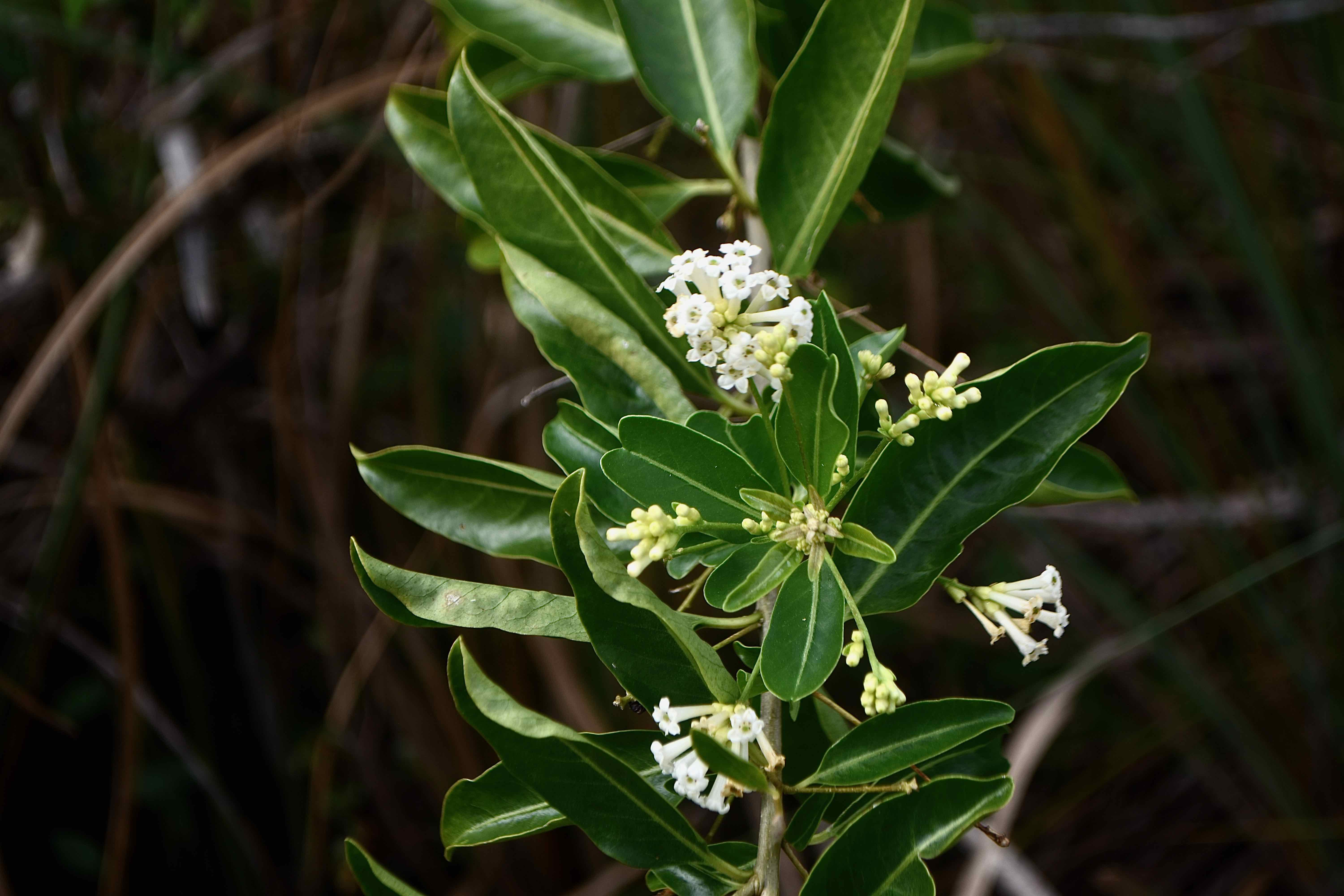
Dayflowering jessamine, photographed at Chapel Trail Nature Preserve, Pembroke Pines, Broward County, in November 2021.
Can a plant be both invasive and rare? Apparently. Consider dayflowering jessamine. It’s a plant that within Florida grows mostly in the Southern end of the Peninsula, yet the authoritative Institute for Regional Conservation has found it in only two of South Florida parks and preserves.
So why is it labeled as an invasive? And who’s done the labeling? A few facts first.
Dayflowering jessamine, Cestrum diurnum, is a native of the Caribbean, particularly the Greater and Lesser Antilles. According to the U.S. Department of Agriculture via its PLANTS Database, it’s only found growing in the wild in Texas and Florida. The USDA has no county-level data for Texas, but it’s likely restricted to the southern part of the state along the Rio Grande Valley and Gulf Coast.
In Florida, again, it’s mostly found in the southern end of the Peninsula but it’s been recorded growing as far north as Hillsborough and Orange counties, according to various sources.
The IRC has documented it growing in Biscayne National Park and the Lignumvitae Key Botanical State Park. The University of Georgia’s Early Detection & Distribution Mapping System has other scattered sightings, mostly in Miami-Dade and Broward counties.
According to the IRC, it’s been around in Florida since at least 1884, when J. Cosmo Melvill found it on Key West. John Kunkel Small later documented its presence in some hammocks on Key West in 1913.
Some botanical basics: dayflowering jessamine is a large shrub or small tree normally growing between six and 10 feet tall. The leaves are maybe an inch long, shiny green, elliptical in shape, simple (no serrations or lobes along the outer edges), arranged alternately along the stem and with a short stalk.
The flowers are relatively small but grow in clusters, amplifying their effect. They’re white, trumpet-shaped, normally with five lobes, rarely with six, and extremely fragrant. Dayflowering jessamine blooms all year.
In turn, the flowers produce small green berries that become dark purple or black when ripe. Birds love ‘em and that’s the source of the problem with dayflowering jessamine. They eat them, then poop out the seeds.
The Florida Exotic Plant Council has labeled dayflowering jessamine a Category II invasive, meaning it has yet to cause any significant environmental damage but could potentially and needs to be monitored. The Florida Exotic Plant Council has no legal authority. It cannot ban the sale of dayflowering jessamine or any other plant for that matter.
But Miami-Dade County does have that authority within its bounds, and in 2001, it prohibited the sale or planting of dayflowering jessamine. Violators can be hit with a $500 fine. According to the county, dayflowering jessamine has been found growing in the county’s rare pine-rockland habitats, in open spaces and along the edges of hardwood hammocks. Not a lot is known about the plant’s growing habits within its native range, but it is apparent that it has little or no tolerance for heavy shade.
As we noted above, birds love the berries and are a primary way the seeds spread, as evidenced by the way dayflowering jessamine tends to pop up along fence rows. The fear is that if plant becomes widespread as a landscaping plant, it could become widespread in the wild. Hence the Category II invasive label. By the way, plants that are already wreaking havoc on the environment are Category I invasive.
In fact, dayflowering jessamine is widespread in the Pacific and is considered invasive in a number of island groups, including Hawaii, Guam, the Northern Marianas, Cook Islands and Tonga.
Dayflowering jessamine is also known as day jessamine, day cestrum, inkberry, tintan china and also spelled day flowering jessamine. It is a member of Solanaceae, the family of tomatoes, peppers and potatoes, among others.
Chapel Trail Nature Preserve



